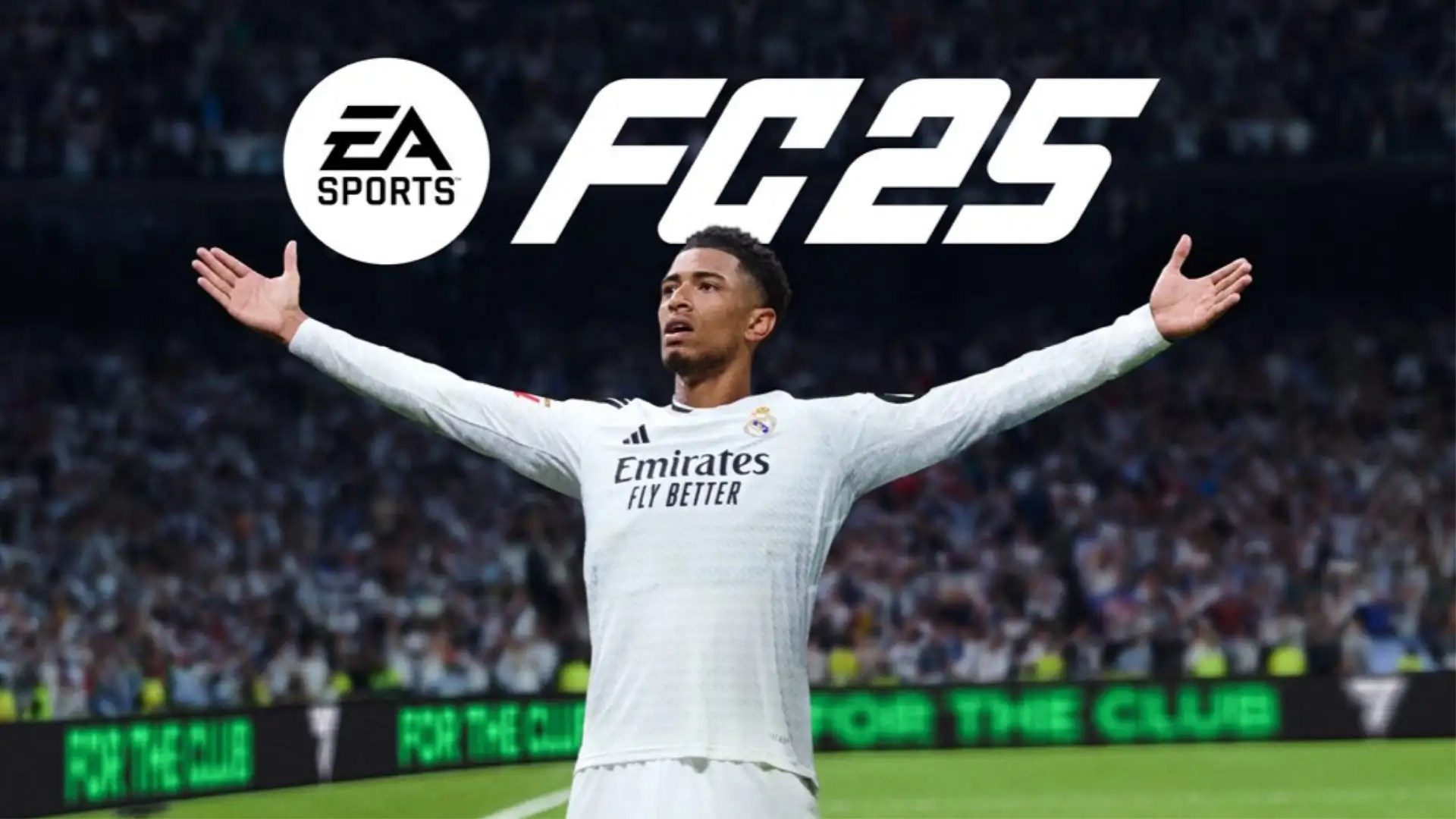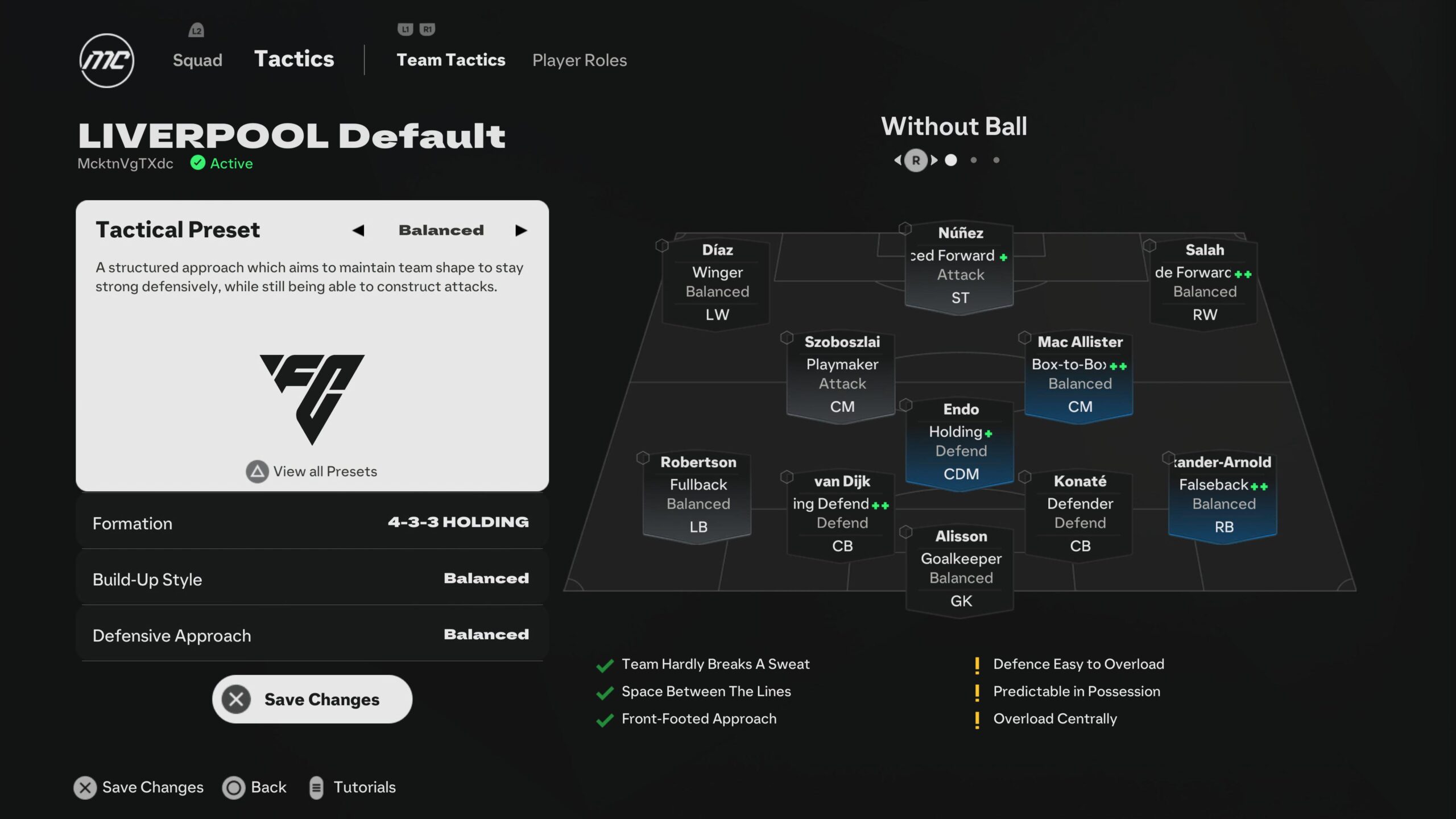It’s that time of year again—the release of FC 25 is here, ushering in a new football season for fans around the world. Whether you’re coming off the joy or frustration of your club’s last campaign, or you’ve been anxiously tracking transfers to see how your squad will shape up, it all leads to this moment. FC 25 allows us to step into the virtual world of football, reliving our team’s triumphs or rewriting its destiny. For me, as a dedicated Career Mode player, the excitement was particularly high this year. After years of feeling sidelined by the overwhelming focus on Football Ultimate Team (FUT), it’s a relief to finally see Career Mode receiving the attention it deserves. In this review, I’ll be focusing on these long-awaited improvements and changes, giving you my thoughts on whether this update truly delivers for Career Mode enthusiasts.
Starting Career Mode for the first time, I was welcomed by a revamped, more elaborate menu, packed with new elements that allow for deeper customisation of how the season plays out. Right off the bat, I could adjust settings like the impact level of wind effects on matches, which adds a subtle layer of realism to the gameplay. There’s also the option to control how quickly both senior and junior players develop, giving more control over squad growth. A particularly exciting addition is the ability to determine whether Youth players perform at their current OVR level or at their potential level, offering a glimpse into their future qualities. Yes, that’s right—youth games are now a thing, but I’ll dive into those details later in the review.

After tinkering with all the settings, I finally dove into the manager’s menu, and one thing immediately caught my attention—the UI overhaul. The new menu sports a modern, sleek design, but I’m honestly not sure if this change was necessary. The previous menu layout worked just fine, with everything clearly organised under the right tabs, giving us easy access to all the vital information. This new interface, on the other hand, feels like it’s made for a tablet or mobile app, with a ‘card-based’ design that takes up far too much space on the screen. If I wanted to access my Team Sheet or Team Management, I had to swipe through several large cards to find what I needed. I gave this new menu a fair shot, trying to adjust to it, but it’s proving to be more frustrating than functional. This is a bad design for a game mode that requires so much of the player’s time and attention on the menu. I prefer the old dashboard layout where everything I needed was right there, slapped on a single screen, without unnecessary swiping.
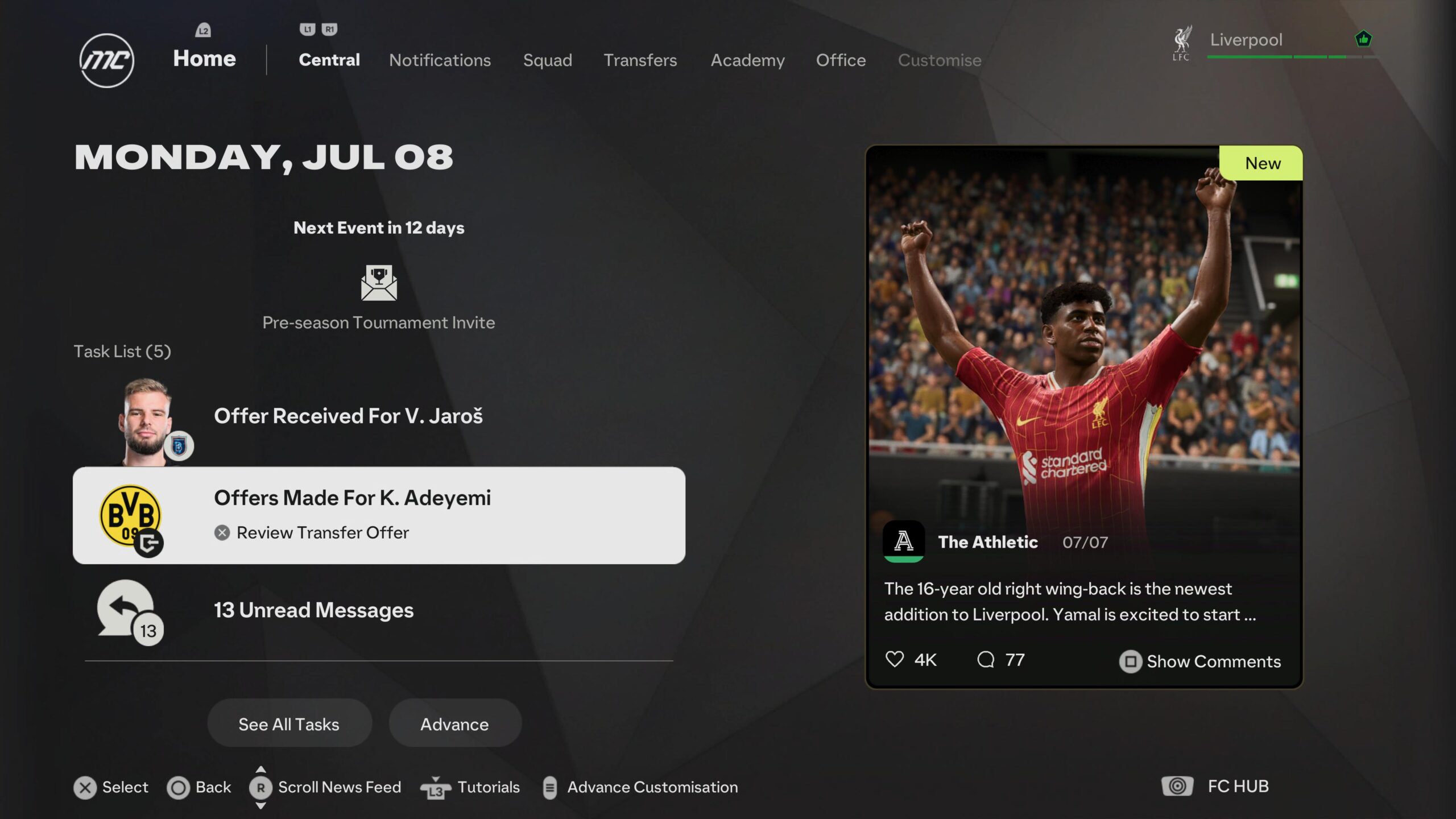
The game also handles notifications differently now—yet another change that leaves me questioning why the old system needed to be revamped in the first place. In the previous setup, notifications would pause the simulation and immediately bring up a tab relevant to the event that needed attention, whether it was a message, transfer update, or something else. Now, however, the game halts simulation and displays a list of “Tasks,” some of which may not even require our immediate attention. To figure out why the simulation stopped, I had to click through each item individually. The most frustrating part is that even transfers still in negotiation show up as tasks needing attention, causing the simulation to stop nearly every day. If you have an unimportant message that you’ve left unread, the game will nag you about it daily. It makes me wonder if the designers responsible for these changes actually understand how players engage with Career Mode—because these notification tweaks and the new menu are far from an improvement, they are actually annoying.
Like in FC 24, FC 25 allows managers to select their club’s playstyle, offering options such as high-risk, high-reward Gegenpressing or possession-based Tiki Taka. However, a new layer has been added during matches. The game now suggests quick tactical switches on the fly, such as shifting from Gegenpressing to Tiki Taka depending on the situation on the field. This dynamic approach is a step forward, but the execution isn’t always perfect. While the idea of real-time tactical suggestions is a welcome addition, the substitutions it suggests often lack logic. For example, I once had the game recommend replacing Virgil van Dijk, my centre-back who still had 60% stamina, with a winger—even though I had a fresh centre-back on the bench. This can disrupt the flow, as the substitutions don’t always align with realistic football strategies.

The new Football IQ feature is cool. Managers can now assign specific roles to individual players, granting more control and strategic flexibility. For example, I could turn a central midfielder into a CM half-winger, expanding their range of movement, or instruct Trent Alexander-Arnold to drift into midfield as a false right-back. This feature adds a new level of depth and realism to gameplay, offering tactical possibilities that go beyond what I’ve experienced in previous FC or FIFA titles.
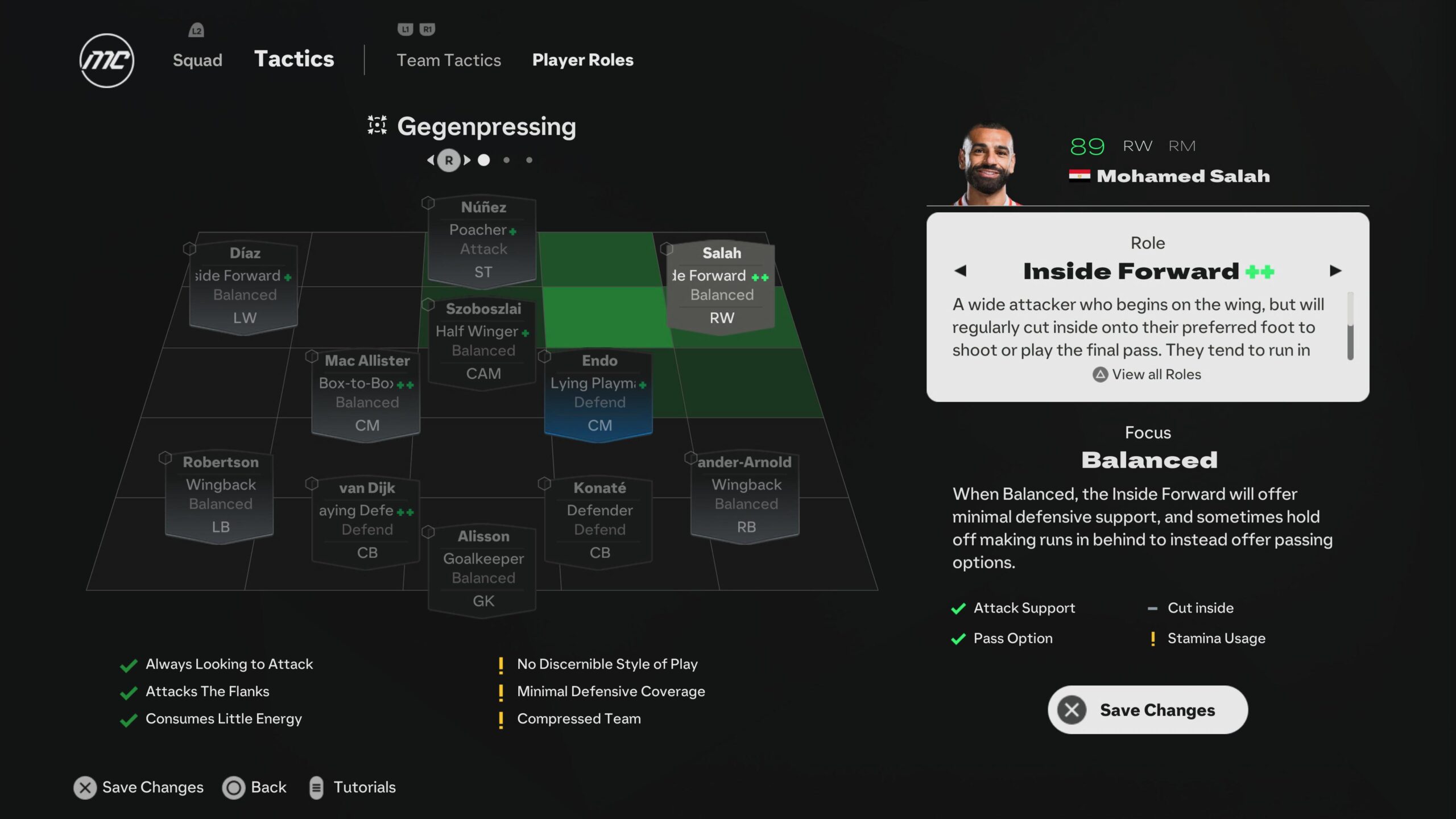
The Youth Academy in Manager Career mode is better now thanks to the new features introduced this year.
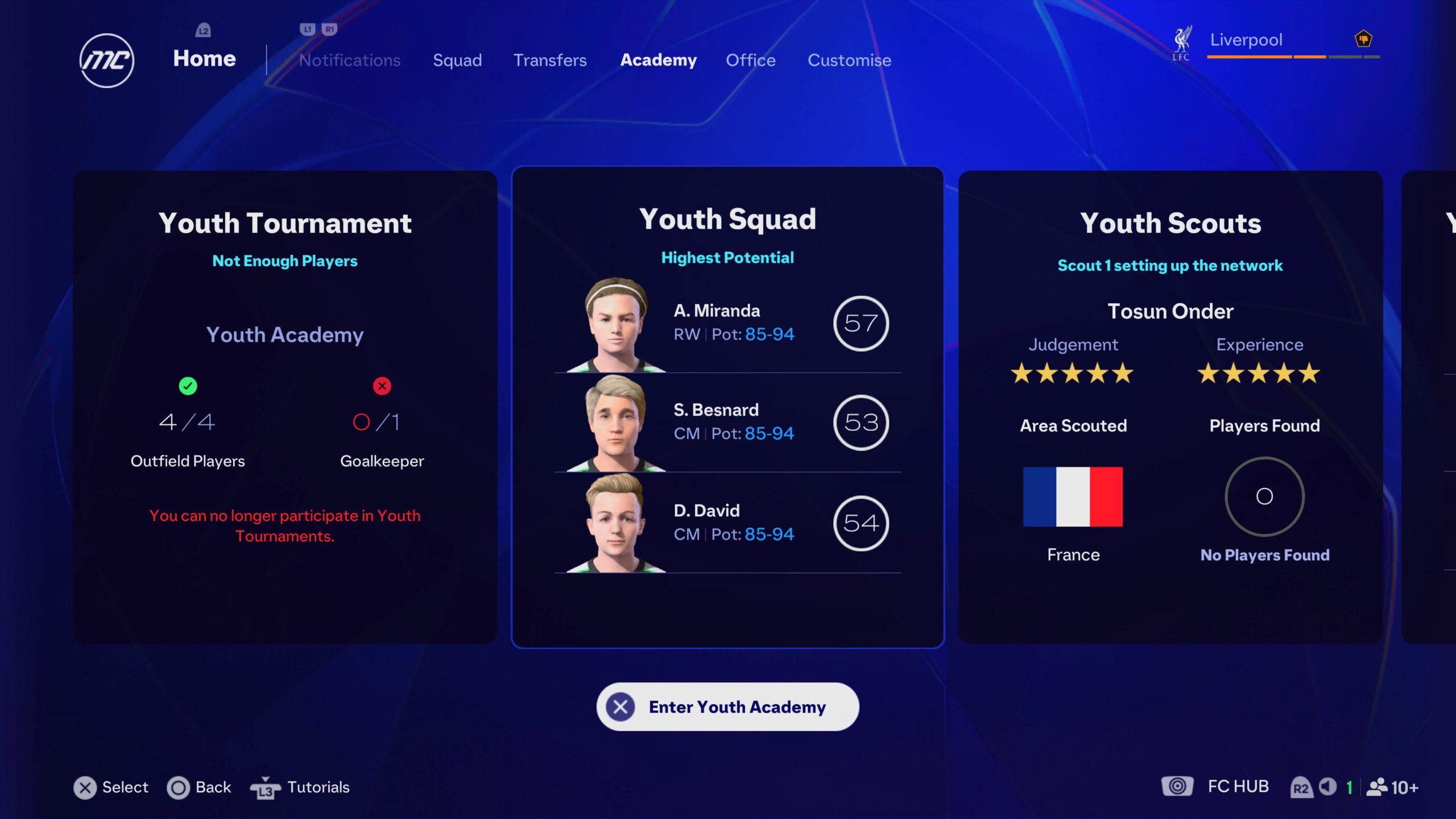
I can recruit talents as young as 13 years old, compared to the previous limit of 15. But what truly enhances the experience is the introduction of 5v5 Youth Tournaments, where I can test my young prospects and get a real sense of their potential before they reach the main squad. The scouting network has also been expanded to cover more countries—Malaysia, for instance, has become an accessible scouting ground, which is a personal favorite for me. As mentioned earlier in this review, I also appreciate the option to adjust the settings at the start of the campaign, allowing for faster youth development. This feature is a welcome addition for those of us who love nurturing young talents and want to integrate them into the first team as soon as possible.

The football experience in FC 25 has undergone a noticeable upgrade. Honestly, I didn’t think it was possible for them to make the game feel more intuitive. For years, I had accepted the quirks and flaws in the control scheme as limitations, believing that a truly authentic football experience was out of reach. Yet, here we are.
Players are now intercepting passes and tackling dribbles with far more precision, and I find myself engaging in more battles in the midfield. In one match, I opted for a defensive approach with Eduardo Camavinga and Aurélien Tchouaméni sitting deep in my own half. The result was exhilarating—these two were relentless in breaking up attacks, with timely interceptions and tackles that crushed my opponent’s momentum. Midfield dominance has never been more critical. Matches feel intense, with defenders pressing high, wingers tracking back, and turnovers happening more organically. It’s a brilliant evolution that makes the game feel more lifelike.

On the attacking front, the AI is smarter and more proactive, actively seeking out open spaces to run into. My players now make clever off-the-ball runs, slipping past defenders with ease, just waiting for a well-timed through ball to glide into position. That first touch, followed by a clean finish, is immensely satisfying. For the first time in the series, I successfully protested a foul in the opponent’s box, which resulted in a penalty. Talk about satisfaction!
However, the AI isn’t without flaws—they sometimes fumble when receiving a pass, occasionally applying too much force, causing the ball to rebound. But if you ask me, that imperfection adds to the realism. Football is messy. We’d be lucky to witness 10 minutes of brilliance in a full 90-minute match, with the rest being a tug of war to force errors. In that sense, FC 25 offers a football experience that feels far more convincing and true to life than its predecessors.
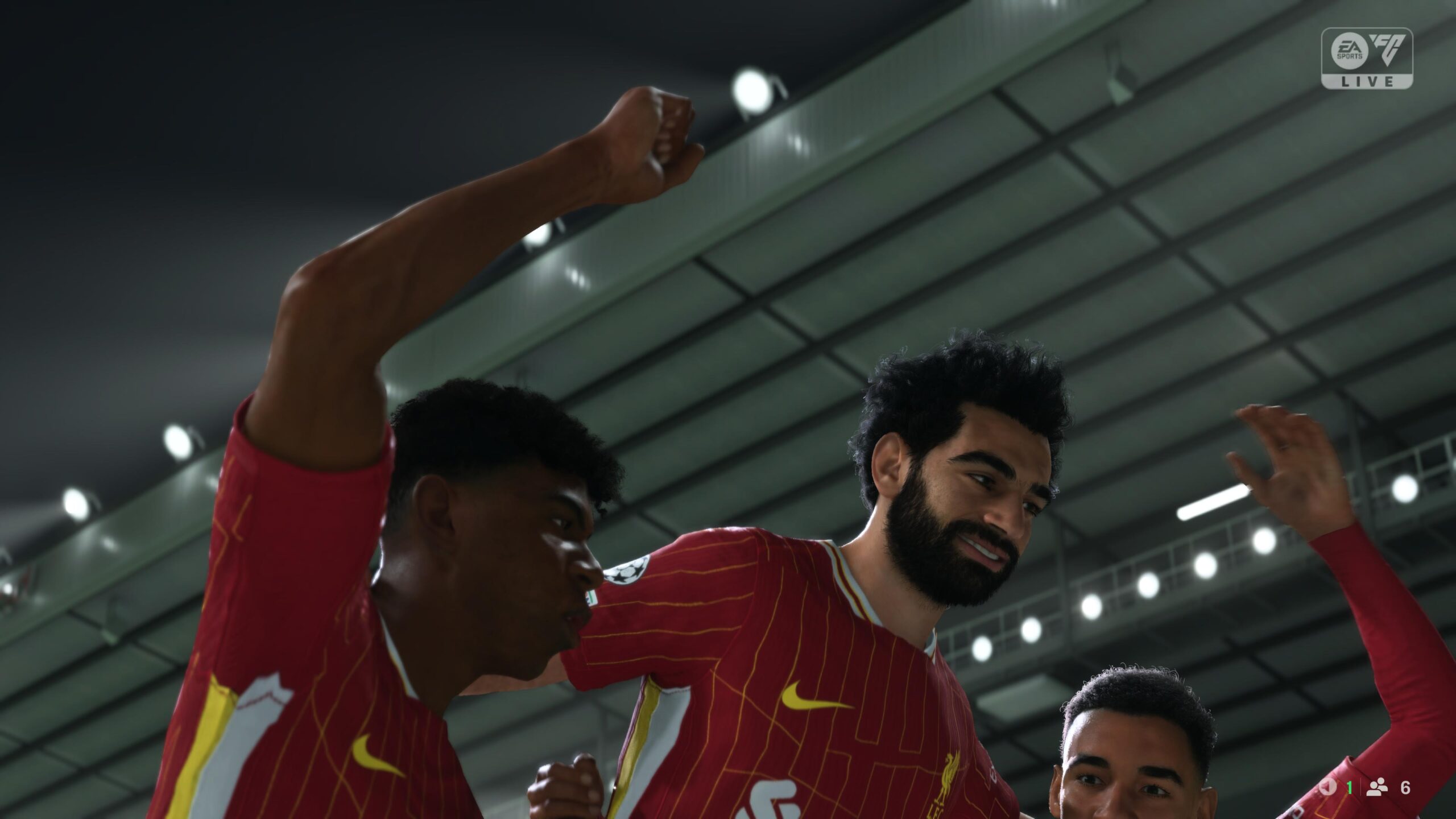
I remember in one of my nail-biting matches against Arsenal, the score was locked at 2-2 in the 86th minute, and desperation was setting in. My front three were completely spent, and with two of my first-choice substitutes injured before the game, I was left scraping the bottom of the barrel. But I had one ace up my sleeve—Jeremy Frimpong, fresh on the bench. Swapping him in for Trent Alexander-Arnold felt like a long shot, but I figured his pace and versatility as both a fullback and a right midfielder might just make a difference in our final push.
By the 92nd minute, we caught a break. Arsenal botched a set piece, and the ball found its way to Camavinga. I saw Salah making a run, but with two defenders bearing down on him, I knew he didn’t have the stamina left to break through. Then I spotted Frimpong, charging up the field like a man possessed. It was now or never. I sent a through ball his way, and Frimpong—still fresh and full of energy—received it perfectly. His defensive stats made him impervious to the pressure coming from behind, and his qualities as a right midfielder shone through as he easily bypassed the last defender.
It was a surreal moment—Frimpong dribbled to the perfect spot, the timing impeccable, as if everything had aligned for this one shot. I could hear the commentator’s words: “They want him to shoot!”, referring to the audience. And shoot he did, firing the ball into the bottom right corner. The stadium erupted in cheers, and the entire Liverpool bench flooded the pitch to celebrate. Frimpong was the hero of the day, and in the new Post-Match interview system where the game now would ask questions about key players in the match, I made sure to compliment him with the best choice of answer available.
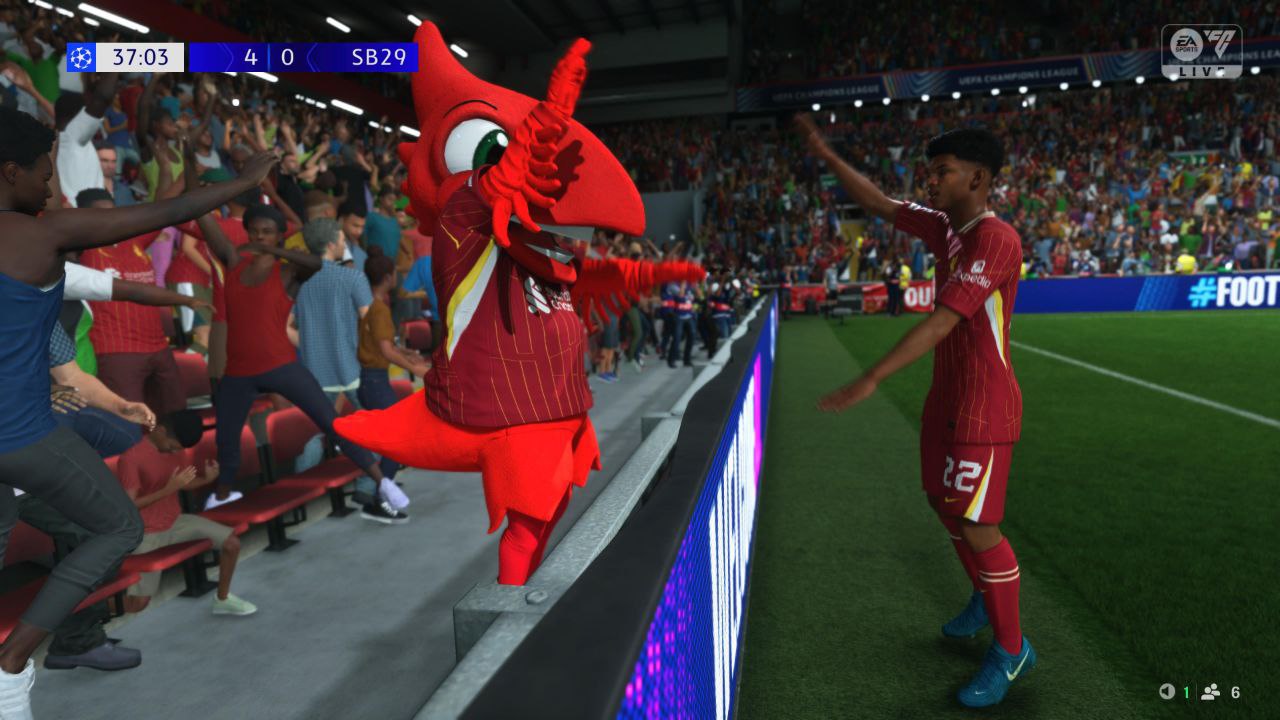
FC 25 certainly doesn’t lack intensity or thrilling goals, but when it comes to the audio experience, the game falls a bit flat. While the visuals and animations have clearly been given a significant upgrade, the same attention doesn’t seem to have been paid to the sound design. The crowd’s cheers, which should fuel the atmosphere of every match, feel oddly muted compared to past FC titles. Even more jarring is one of the commentators, who sounds like an A.I. reading a script—his voice devoid of any emotion or passion. It’s both cringe-worthy and distracting, which is a shame given how much the audio contributes to immersion in a football game.
What I Liked About FC25
- Revamped Youth Academy: Allows for younger recruits and includes 5v5 Youth Tournaments for early talent assessment.
- Smarter AI & Enhanced Gameplay: More realistic interceptions, tackles, and player movement elevate the in-match experience.
- Tactical Flexibility: Football IQ feature adds depth, letting managers assign specific roles and strategies to players.
- Improved Visuals & Animations: Matches look and feel more fluid with better character models and animations.
- Expanded Scouting Network: More countries, including Malaysia, offer new opportunities for finding youth talent.
What I wished was better
- Muted Audio: Crowd reactions lack intensity, diminishing the atmosphere during key moments.
- Robotic Commentary: One commentator sounds lifeless, breaking immersion with emotionless, scripted lines.
- Frustrating UI Changes: The new menu system is cumbersome, with unnecessary swiping and interruptions that detract from the flow of gameplay.
- Task Notification System: Constant, unnecessary simulation stops caused by trivial task updates can be frustrating.
Verdict
FC 25 successfully delivers a much-needed boost to Career Mode, offering new depth and features that longtime fans will appreciate. From the more hands-on Youth Academy experience to the refined on-pitch gameplay, this iteration of the series makes significant strides. However, despite the upgrades and the immersive football mechanics, FC 25 falters in several departments namely its; audio execution and unsuitable menu type, which diminishes the overall experience. Still, for Career Mode enthusiasts and those seeking a more realistic football simulation, FC 25 is a solid entry that mostly hits its mark.
